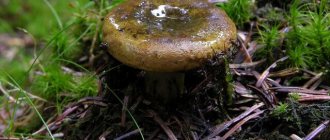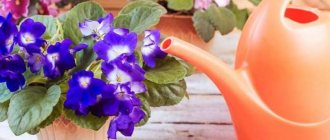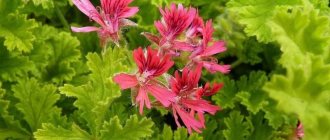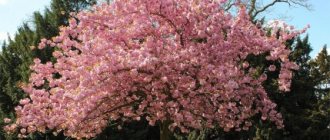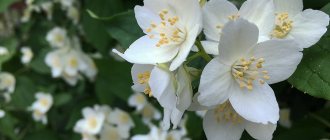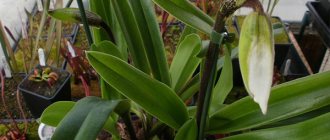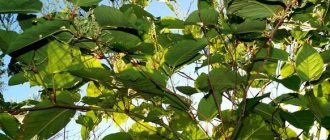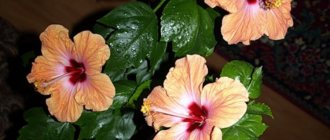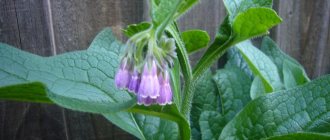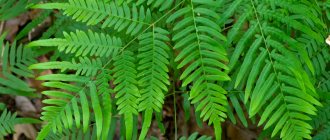The herbaceous plant Nigella, also called nigella, is directly related to the ranunculaceae family. This genus includes more than 20 species of different plants. Under natural conditions, they can be found in Western Asia, Western Europe and North Africa. The Latin name comes from the word "niger", which translates as "black". The plant got its name due to the fact that its seeds are charcoal-black. First, Nigella ended up in the North Caucasus and Turkey, and from there it came to India, and from there to European countries. In England, this plant is called blessed seeds, black cumin, nutmeg, kalinji, flowering fennel, black sesame, and also Italian coriander, but nigella has nothing to do with any of the mentioned plants.
general characteristics
This herbaceous plant, which grows only for one year, has several names: “maiden in green”, “Italian coriander”, “nutmeg flower”, “black cumin”, but is more often called “nigella” for the color of the seeds.
The flower is not only truly unusual and interesting, but also useful: the essential oil and seeds are successfully used for medicinal purposes, as spices in cooking, and in perfumery.
Nigella (lat. Nigella damáscena) is a species of the genus Nigella of the Ranunculaceae family. In nature, it lives in steppes on slopes and in weedy places. The homeland is considered to be the northern part of Africa, the western part of Asia, the Caucasus, as well as the south and southeast of Europe, where 25 species are known. Here, in eastern Europe, only 11 are common.
Mainly 2 species are grown in garden plots:
- Spanish Nigella (Nigella hispanica) is a bush of flowers that grows, has rich blue flowers with a fragrant scent, attracts attention with a large ovary of a dark red color and stamens protruding above the flower, also dark red.
- Nigella damaskena (Albina) is a small bush up to 45 cm high, with flowers of pink, creamy yellow, white, light blue and bluish. The leaves are filamentous, pinnate and dissected, reminiscent of an openwork cloud. Usually the flowers are single and are simple and double in shape (petals are arranged in 2, 3 or 4 rows) with a diameter of up to 4 cm. The stems of this species are straight, but branched, without pubescence.
We will consider this particular species, since it is more common and better known. Nigella flowers bloom in May, and then the plant retains its color until the end of the season. Each flower actively blooms for about 7 days, and the entire shrub retains its blooming appearance for a month or a month and a half.
Nigella Damascus is represented by the following varieties:
- Scheherazade.
- Variegated path.
- Neptune.
- Star dust.
- Albina.
- Oriole.
- Persian diamonds.
- Cambridge Blue.
- Miss Jekyll Rose.
The fruits of nigella are swollen or, conversely, flattened capsules with 5 leaflets, which contain oval and matte tetrahedral black seeds.
Nigella Damascus is planted in a group with other garden plants, not only in flower beds, but also along garden paths and various fences, in rock gardens and rockeries.
This flower also looks beautiful and original in floral arrangements (it goes well with poppies, calendula and cornflowers), and not only the flowers themselves are popular, but also “airy” greenery.
Nigella flower - description
Nigella nigella is a herbaceous annual with branched stems from 30 to 60 cm high, pinnate and sometimes palmately dissected lacy alternate leaves, the upper of which rise above the flower like an openwork blanket. Nigella flowers are large - up to 4 cm in diameter, bisexual, solitary, with five sepals resembling petals, colored blue, white or yellow.
In flowers of double varieties, the sepals are arranged in two, three or four rows. Nigella petals are transformed into nectaries. The nigella fruit is a flattened or swollen capsule consisting of five leaflets containing matte, ovoid, black nigella seeds.
In decorative floriculture, nigella flowers are an important element of landscape design: they are planted along hedges and borders, in flower beds, in rockeries, on alpine hills, and they are also used as an element of flower arrangements.
Soil preparation and planting
Nigella does not like mulching the soil, so the planting area should first be cleared of weeds, dug up and loosened. This will need to be done throughout the entire growth of the plant.
Planting nigella seeds
It should be noted that this plant spreads only by seeds (generatively). In floriculture there is also a method of propagation by self-sowing and seedlings. There are no other breeding options.
They must be planted either at the end of spring, in May, or before winter directly in open ground. The depth of sowing the seed should be no more than two centimeters.
- Young shoots tolerate cold quite well, but it is still recommended to protect and cover them at first, especially from night frosts. During the day, remove the cover, if planting is carried out in the spring, for ventilation.
- You need to know that seedlings, like the whole plant, do not take root well when transplanted, so it is recommended to immediately find a permanent place for Nigella.
- The plant blooms after planting the seeds in a month or a month and a half and continues to bloom for about two months.
Seedling planting method
As an alternative, this type of propagation of nigella is also used. To do this, at the end of March or beginning of April, the seeds are planted in a greenhouse or greenhouse to a depth of no more than 2 cm.
- The first shoots should appear within a few weeks. When several adult leaves grow, they are planted in special peat pots, into which humus is also mixed. In order not to disturb the root system of the plant any longer, they are then placed in these pots and transplanted immediately into open soil.
- The shoots quickly become stronger and grow. At the beginning of spring, preferably in May, when the last night frosts have already passed, the seedlings can be transplanted outside to a previously prepared place.
- The area for planting seedlings should be chosen open, without shade or dampness. Nigella of Damascus loves the sun and air.
- You should choose a place where plants that cover the soil and creep do not grow. Chernushka does not like such neighbors.
- The soil composition must contain a sufficient amount of lime or have a neutral composition. The structure of the soil is recommended to be dry, well loosened and light. In this case, the soil must be sufficiently nutritious.
- It should be remembered that in shaded places and in soil with a high percentage of acidity, the bush develops poorly and its flowering will be weak.
Useful properties of nigella
Nigella sativus is not only grown as a decoration for flower beds, it has medicinal properties and is used as food. The seeds have a pronounced strawberry taste and smell. They are added as food additives in baking and culinary production, and are used in canning vegetables. Nigella leaves are also edible, tonic and improve overall well-being.
Nigella seeds contain a large amount of useful substances: vitamin E, ascorbic acid and essential oils. They have a comprehensive restorative effect on the body. They are used as folk remedies for diseases such as dysbacteriosis, cystitis, and pyelonephritis. It is recommended to add seeds to food during drug treatment for epilepsy, diabetes, asthma, cancer and drug addiction. An infusion prepared from the seeds of the plant improves metabolic processes in the body, helps eliminate toxic substances, helps with weight loss, slows down aging and strengthens memory.
To prepare a tincture of nigella, you need to infuse the seeds in vodka in a ratio of 1:5 for about 7 days. After which the liquid is filtered, then it is stored in the refrigerator. It is recommended to take 10-15 drops of this tincture to treat diseases associated with the respiratory system.
To prepare tea, pour boiling water over the seeds and infuse them for 20 minutes. Take it for several days as a diuretic and choleretic agent. This tea has anthelmintic properties and does not irritate the gastric mucosa.
Nigella perfectly helps fight indoor moths and mosquitoes. The specific smell of seeds repels insects.
It is not recommended to consume the seeds for pregnant women, people suffering from coronary heart disease, gastritis, cholelithiasis, or patients who have recently undergone an organ transplant.
Caring for Nigella Damascus
It is important not to overdo it with watering, since the plant reacts poorly to both excessive dryness and excessive moisture and dampness. The watering schedule must be strictly monitored.
You shouldn’t rush with fertilizers and fertilizing either. This flower can grow in an area that has already been fed before it. Only when the buds and first flowers appear, it is advisable to add potassium and phosphorus, which support the lush flowering of nigella.
What does it look like
Nigella is a flower that has very winding shoots. They reach a height of 0.3-0.6 m.
Nigella or Damask nigella belongs to the Ranunculaceae. The flowers reach 4 cm, they have 5 sepals. The color can be Nigella white or Nigella blue. The petals are never variegated.
Damascus nigella
Under natural conditions, the plant grows in Asia, Europe and North Africa. The name is translated from Latin as “black”.
Pests and possible diseases
If there is too much rainfall or too much watering, powdery mildew (penorosporosis) may appear, which is eliminated with fungicides. You can also use various biological products rather than chemical ones.
Unfortunately, in recent years this disease has become very common among garden plants and is caused by various microscopic fungal microorganisms.
This disease spreads by air and occurs due to insufficient watering. A white coating appears on the leaf blades, which is sometimes not very noticeable, especially in hot weather.
A good remedy is sprinkling nigella with wood ash, and also a serum made from copper sulfate (1 teaspoon) and water (7 l) is recommended from folk remedies. With this disease, nitrogen fertilizers are excluded, which further provoke the development of the disease.
Spider mites are one of the few pests that plague Nigella. It is eliminated with the help of insecticides. and thanks to its strong aroma, other pests avoid this plant.
If you follow all the fairly simple rules, you can grow very beautiful and spectacular Nigella Damascus flowers in your flower garden. And since this plant is not very often found in flower beds in our area, you can surprise your guests with openwork bushes of airy and delicate nigella damask.
Possible problems in growing
Nigella has pests, and various diseases are also possible. For this reason, it is necessary to carry out preventive measures so that the plant does not die.
Among the pests of nigella, it is worth highlighting the spider mite. They suck the juice from the leaves. In this case, the plant should be treated with insectoacaricides.
Nigella pests
If the weather is damp, the flower may become infected with powdery mildew. In this case, the plant is treated with a fungicide 2-3 times.
If the plant is watered abundantly, it will begin to rot. If you choose the wrong place, the plant will not develop well.
